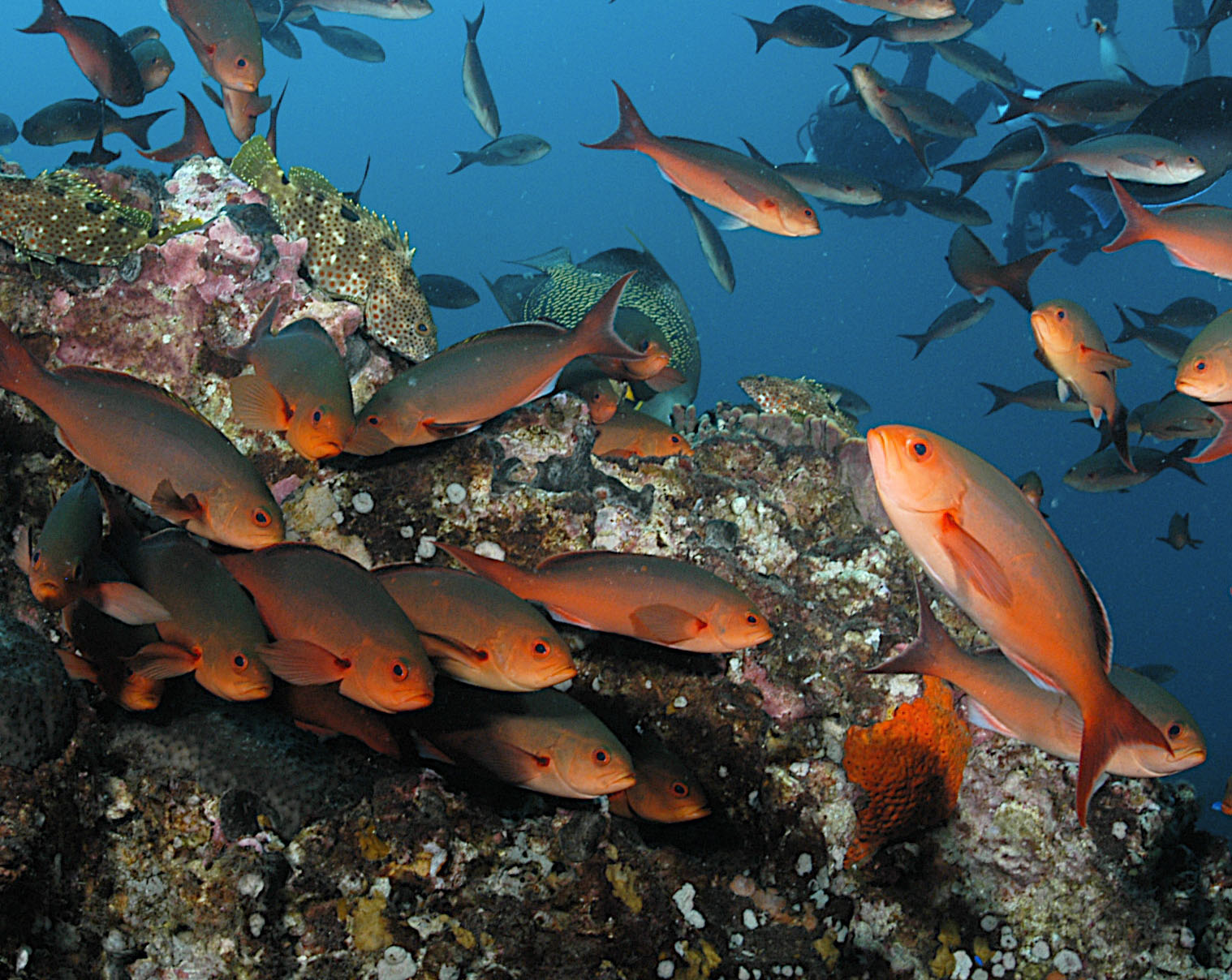NOAA’s National Centers for Coastal Ocean Science awarded $1.7 million of an anticipated $5.9 million over the next four to five years for three research projects to investigate species’ habitat usage and connectivity in and around national marine sanctuaries in the Florida Keys, Flower Garden Banks (Gulf of Mexico), and Stellwagen Bank (off coast of Massachusetts).

Marine protected areas (MPAs), such as national marine sanctuaries, are designated to protect significant natural and cultural resources within the marine environment for the benefit of present and future generations. While the use of MPAs has grown, there is still a gap in our understanding of how species use habitats, how habitats are connected, and how MPAs can benefit areas outside their boundaries. An improved understanding of species’ habitat requirements and ecosystem connectivity is needed to effectively protect critical habitats, manage human use, and preserve ecosystem services within MPAs.
Working with the Office of National Marine Sanctuaries and the National Marine Protected Areas Center, NCCOS developed a funding opportunity to improve the ability of resource managers to address habitat usage and connectivity in MPA management plans. Three projects were selected that will provide information on the habitat preferences of fishes, marine mammals, and turtles within and outside each sanctuary. Findings from this research will support MPA managers at the state and federal levels in their decision making to expand existing MPAs and target zoning regulations to ensure the persistence of important species.
New Awards:
- Florida International University received $764,044 to study foraging of four reef-fish species — white grunt, bar jack, mutton snapper, and great barracuda — in the seagrass beds of Florida Keys National Marine Sanctuary. Seagrass areas are important fish foraging habitats in coral reef ecosystems. Understanding where these fish forage and how this is affected by the current and future configurations of seagrass beds will help optimize MPA design for species using multiple habitats. Learn more
- Texas A&M University, Louisiana State University, Mississippi State University, University of Florida, University of Texas – Rio Grande Valley, Flower Garden Banks National Marine Sanctuary, NOAA Fisheries Southeast Fisheries Science Center received $740,629 to investigate habitat requirements and connectivity for key reef-associated fish species in Flower Garden Banks National Marine Sanctuary and surrounding areas. Understanding how fish populations use these habitats and how the MPA benefits areas outside its boundaries will help managers develop MPAs that are effective and benefit present and future generations. Learn more
- NOAA Fisheries Northeast Fisheries Science Center, Stellwagen Bank National Marine Sanctuary, Massachusetts Division of Marine Fisheries, and Integrated Statistics received $163,000 to evaluate how highly migratory and protected species (including cetaceans, fishes, pinnipeds, seabirds, and turtles) are using a network of state and Federal MPAs in the Gulf of Maine, and how their use intersects with human use in the same regions. Understanding the benefits of existing MPAs to species at risk will inform recommendations for potential new or expanded MPAs, advancing the scientific understanding needed to protect coastal and ocean resources, and ensure their viability for future generations. Learn More
This research directly supports the White House’s America the Beautiful initiative, which promotes collaboration to conserve, connect, and restore 30 percent of our lands and waters by 2030 for our economy, health, and well-being.
